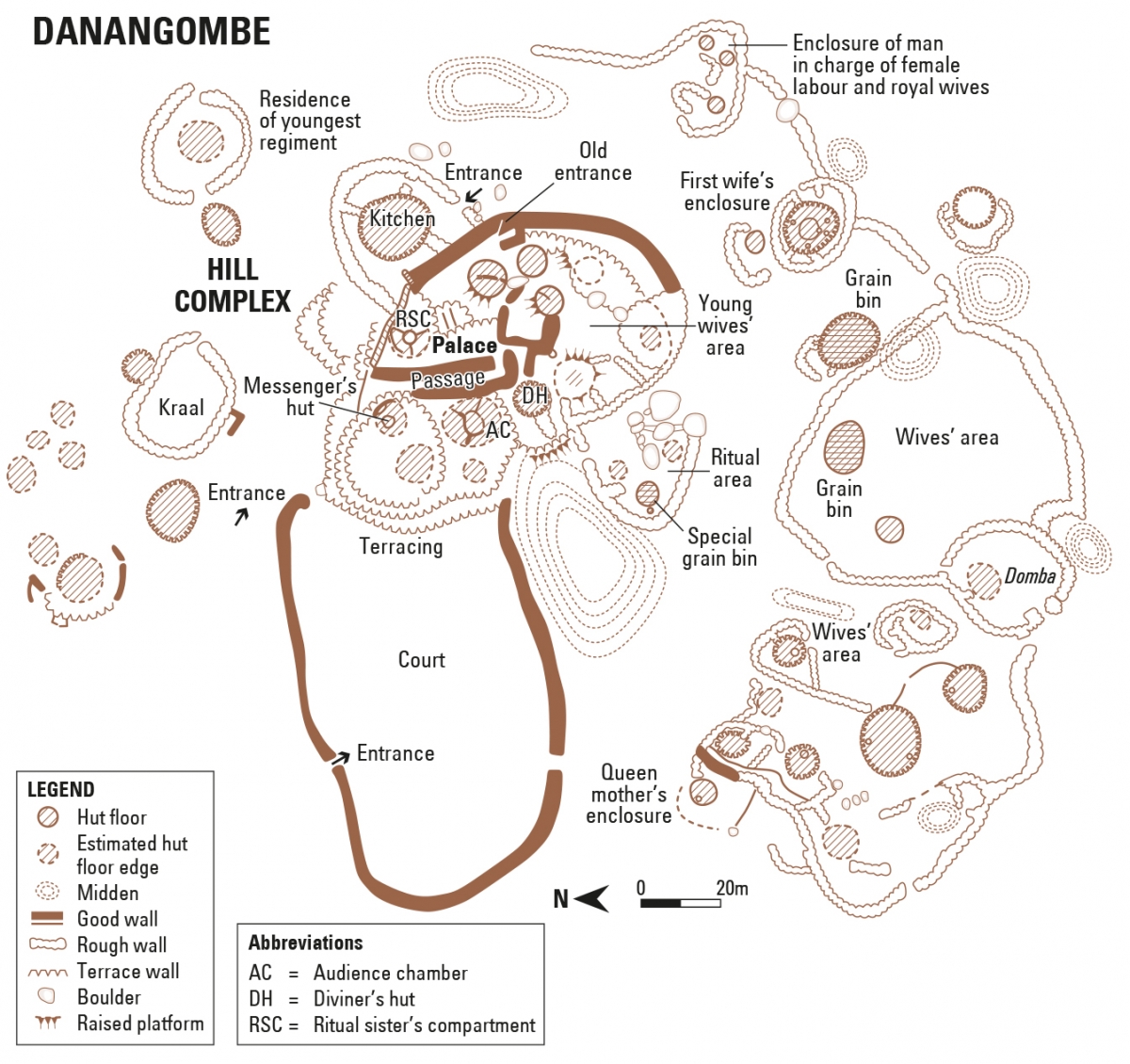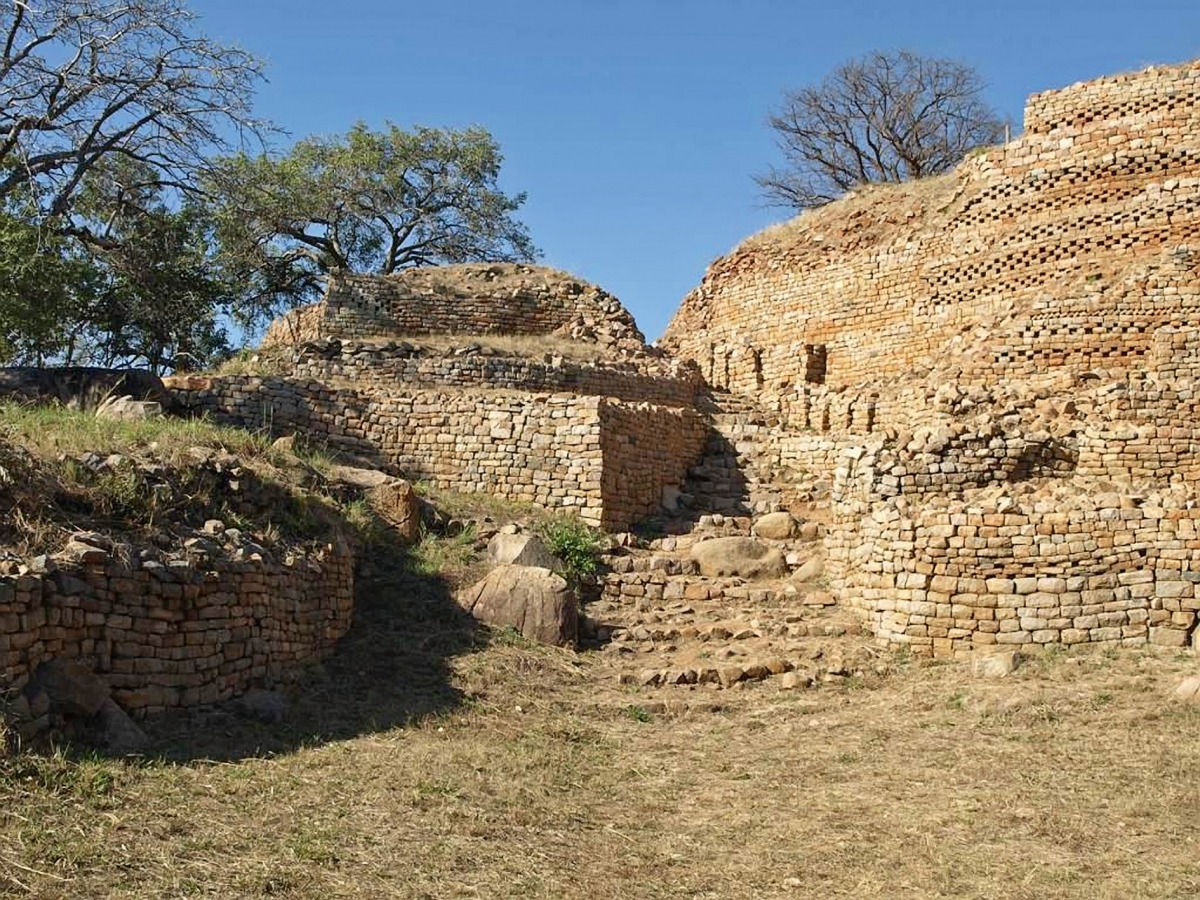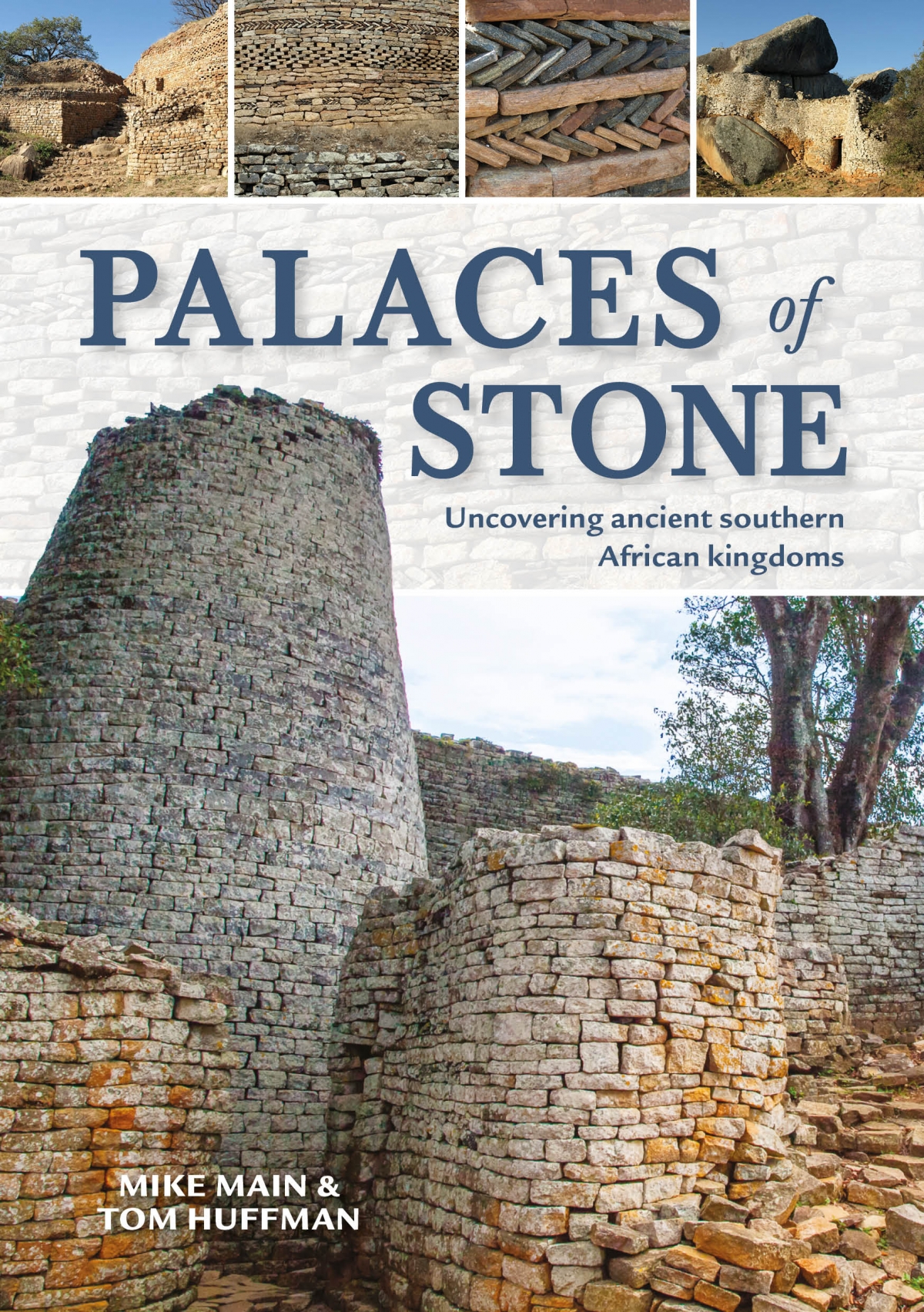
Palace ruins are a heritage that can be shared by all with considerable pride in the achievements of our African ancestors, writes Mike Main, management consultant, freelance writer and lay archaeologist who has spent over 40 years exploring Botswana and its neighbours. Mike is also the co-author of Palaces of Stone, along with Thomas Huffman.
“WHY BOTHER? I mean, once you’ve seen the palace at Great Zimbabwe, you’ve seen it all, right?
No! That’s not entirely true: after you’ve see the magnificent remains near Masvingo, there are 550 more palaces still to view! Of course, they are not all as spectacular – though many of them do actually surpass the famous ruins in splendour. Palaces of Stone is all about an amazing story of kingdoms past that has for too long remained untold. This book hopes to set this right.
|
|
| IMAGE:The design of the court wall at Naletale is rich in symbolism. Mike Main |
All these ruins – palaces, as we call them – are the residences of former kings, paramount chiefs, chiefs or headmen who collectively helped successive dynasties manage and rule a series of states that, over a period of more than 600 years embraced much of Zimbabwe, Mozambique, Botswana and South Africa.
Some palaces, like Khami near Bulawayo, Nalatale and Zinjanja in the Zimbabwe Midlands, and the Majandes and Sampowane in Botswana are spectacularly ornate. Others are little more than a few metres of stone walling but all, without exception, declare to passers-by that ‘this is the residence of a representative of the king himself – beware, show respect’. In addition to commanding authority and respect, these many ruins also eloquently speak of the remarkable kingdoms that successively followed one another in central southern Africa.
Rooted in a series of quite astonishing innovations that appeared within the space of just half a century at the World Heritage Site of Mapungubwe in South Africa, Zimbabwe Culture – characterised by sacred leadership and class distinction – flourished at Great Zimbabwe itself in about AD 1300.
 |
 |
|
IMAGE: Thaba zika Mambo, Mike Main |
The royal seat at Great Zimbabwe endured for about 150 years at the end of which time its influence was replaced by two new entities: one in the south of Zimbabwe at Khami, near modern-day Bulawayo, and a second, Mutapa, located in the far north of Zimbabwe, on the edge of the highlands, overlooking the Zambezi Valley. The rise of one sometimes caused the collapse of the other.
The exact relationship between Mapungubwe, Great Zimbabwe, and the later sister states of Khami and Mutapa is unknown, but what is certain is they were closely related in some way. Building techniques and design, construction materials, symbolism, and familial connections combine to show a common heritage that remains clearly visible throughout the Zimbabwe Culture area. The Khami state endured for the next 200 years – less than the span of the Roman Empire. Mutapa was not as successful as it fell victim to foreign interference and manipulation so that, by the middle of the 18th century, its demise was certain.
“Palace ruins across the region are not just tourist attractions. They are the mark of singular achievement and extraordinary architecture, and as such need to be drawn into the limelight of today’s southern Africa.”
 |
 |
|
IMAGE: Danangombe |
Elucidating the history of the Zimbabwe Culture states is the task of archaeologists and historians, and we would have far more detail to help them in this task had it not been for the thoughtless greed of late 19th-century entrepreneurs in what was then Rhodesia. Once the first fragments of gold were discovered in an abandoned palace, other sites were recklessly ransacked. Priceless stratigraphy was overturned with the spade, completely destroying the record of the past at more than 50 of the largest palaces in the region. Even Great Zimbabwe itself, though protected at the direction of Cecil Rhodes, did not escape the carnage: an early curator, in a fit of ignorant enthusiasm, felt the site should be ‘tidied up’ and removed tonnes of deposits, thereby destroying valuable layers of evidence.
There are no written accounts from the early Zimbabwe period, but Portuguese priests, who were involved in Mutapa from the 16th century onwards, did write of their experiences. It is from these accounts and the archaeological record that we can knit together some idea of what life was like in these former kingdoms.
They managed a trade network that literally spanned the world: Glass beads from the Middle East, cloth from India, and ceramics from the Far East were traded with ivory, copper and gold, among other items. Well-established trade routes linked the hinterland with the coast at Chibuane, Sofala and the Zambezi delta, in what is now Mozambique, from where goods were transported along the East African sea lanes to Kilwa in Tanzania and beyond.
 |
 |
|
IMAGE: The palace at Khami. The stairway, which was once covered, led to the king’s audience chamber, where visitors were received. Mike Main |
Portuguese records speak of as many as 15 market towns (feiras) within the Mutapa state (all in the northern half of Zimbabwe). Such towns, some of them with missionaries, churches and resident priests, provided a base for traders. Gold was much sought after, and may have been so from earliest contact with the coast, but arrival of the Portuguese in the early 16th century greatly increased demand. However, volumes, though significant, never satisfied expectations as mining by local residents was seen as an ‘off-season’ rather than as a primary occupation. Cattle and crops were central economic activities and herd sizes are reported to have been very large.
With sacred leadership, social differentiation by class, an effective system of administrative control, magnificent buildings, trade networks that spanned the world, we see many marks of the modern state. Palaces attempts to bring this knowledge to the general public and dispel any imaginings of a barbaric or ‘uncivilised’ past. On the contrary, we have much of which to be proud.
Palace ruins across the region are not just tourist attractions. They are the mark of singular achievement and extraordinary architecture, and as such need to be drawn into the limelight of today’s southern Africa. They are not the work of foreigners; they are the result of local inspiration and labour – a wonderful heritage that can be shared by all with considerable pride in the achievements of our African ancestors.”
Palaces of Stone is out now.
___________________________________________________________________________________________________________________________
 |
 |
|
YOU MAY ALSO ENJOY
Can you imagine holding a fully-grown shark in the palm of your hand?








